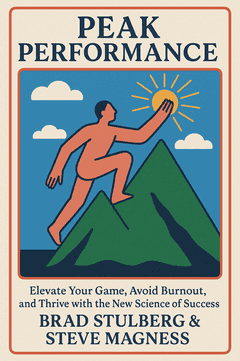What is
The Tools by Phil Stutz about?
The Tools by Phil Stutz and Barry Michels offers five practical strategies to transform life’s challenges into courage, confidence, and creativity. Based on the authors’ therapeutic practices, the book provides actionable exercises to combat anxiety, build discipline, and harness inner strength. Key concepts include embracing adversity, turning pain into positive action, and accessing a limitless "Source" of potential. Designed for real-time use, these tools help readers break free from mental paralysis and live purposefully.
Who should read
The Tools by Phil Stutz and Barry Michels?
This book is ideal for individuals struggling with self-doubt, procrastination, or relationship issues, as well as professionals seeking resilience in high-pressure careers. It’s particularly valuable for those who prefer actionable steps over theoretical advice. Parents, creatives, and leaders will also find methods to overcome negativity, foster gratitude, and unlock untapped potential.
Is
The Tools by Phil Stutz worth reading?
Yes. A New York Times bestseller, The Tools is praised for its no-nonsense approach to self-improvement. Unlike traditional therapy, it offers immediate exercises validated through clinical experience. The strategies—featured in the Netflix documentary Stutz—provide lifelong skills to tackle anxiety, build confidence, and thrive through adversity.
What are the main tools described in
The Tools book?
The five core tools are:
- Reversal of Desire: Confront fears by embracing discomfort.
- Active Love: Transform resentment into compassion.
- Inner Authority: Replace self-doubt with confidence.
- Grateful Flow: Counter negativity with gratitude.
- Jeopardy: Use mortality awareness to fuel motivation.
Each tool is designed for quick application in daily challenges.
How does
The Tools book help with anxiety and self-doubt?
By reframing anxiety as a catalyst for growth, tools like Reversal of Desire teach readers to face fears head-on. Inner Authority dismantles self-criticism by fostering self-trust. Real patient examples show how these methods reduce paralysis, build resilience, and shift focus from past regrets to present action.
What is the ‘Source’ in
The Tools by Phil Stutz?
The "Source" refers to an infinite wellspring of inner creativity and strength. Tools like Active Love and Grateful Flow help readers tap into this force, shifting reliance from external validation to internal empowerment. The concept underscores the belief that fulfillment comes from reaching toward one’s latent potential.
Can
The Tools strategies be applied to career challenges?
Absolutely. Jeopardy helps professionals prioritize goals using mortality awareness, while Reversal of Desire turns workplace fears into decisive action. These tools aid in navigating career transitions, negotiating confidently, and overcoming impostor syndrome. The book’s focus on adversity as fuel makes it ideal for leadership development.
How does
The Tools compare to other self-help books like
Atomic Habits?
While Atomic Habits emphasizes incremental behavior change, The Tools targets immediate mental shifts to dissolve barriers. Stutz and Michels prioritize accessing inner strength over habit formation, blending spiritual undertones with clinical rigor. Both books complement each other, but The Tools stands out for its focus on adversity as a growth catalyst.
What are some key quotes from
The Tools and their meanings?
- “Turn pain into positive action”: Use challenges to build resilience.
- “Live in the present moment”: Escape past/future anxiety by focusing on current actions.
- “Humans thrive when reaching toward their potential”: Growth, not comfort, drives fulfillment.
Are there any criticisms of
The Tools approach?
Some note the tools require consistent practice, which demands discipline. Others find the “Source” concept too abstract. However, most praise the book’s practicality, 尤其当 paired with the authors’ online resources. Critics agree its strengths lie in real-world applicability over theory.
How does Phil Stutz’s background influence
The Tools book?
Stutz’s experience as a prison psychiatrist on Rikers Island and in private practice shaped his focus on actionable solutions. Co-author Barry Michels added therapeutic validation, ensuring the tools are battle-tested. Their combined expertise bridges clinical rigor with accessible self-help strategies.
Is there a documentary related to
The Tools author Phil Stutz?
Yes. The Netflix documentary Stutz (2022) explores Phil’s life, therapy philosophy, and visual models. It delves into the tools’ origins, their impact on patients, and Stutz’s own vulnerabilities, offering a compelling companion to the book.














